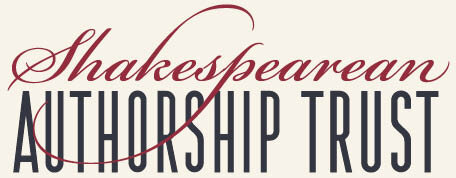Back to Bacon as candidate page
History of the Baconian Shakespeare Authorship Theory
The first to openly imply in writing that Francis Bacon was the author Shakespeare were the Inns of Court lawyer-poets Joseph Hall and John Marston who, in an exchange of Satires published between 1597 and 1598, refer to the author of the Shakespeare poem, Venus and Adonis, as “Labeo,” a jurist, who is also to be identified by the motto Mediocria firma. The motto was the specific heraldic motto of Francis and Anthony Bacon at that time, but, of the two, only Francis Bacon was a jurist.
In 1626, the year of Francis Bacon’s death, his private chaplain and executor William Rawley published Manes Verulamianum, a collection of thirty-two eulogies by contemporary writers, most of them scholars and Fellows of the Universities, as well as members of the Inns of Court, including a bishop, two royal chaplains, and a Regius professor of divinity, which refer to Bacon as an Apollo, the Daystar of the Muses and leader of the poets, being himself a concealed poet, the greatest of his age, who had renovated all philosophy by means of comedy and tragedy. The eulogies contain unique descriptions and symbolic analogies referring to Bacon that are only used elsewhere for Shakespeare, either carved on the Stratford Monument or printed in the Shakespeare Folio, all inferring by this means that Bacon was the author Shakespeare. This is supported and complemented by the description of the author Shakespeare carved on the Shakespeare Monument erected c. 1620-22 in Holy Trinity Church, Stratford-upon-Avon, which likens Shakespeare to the statesman and judge Nestor, the orator and philosopher Socrates, and the scholar-poet Virgil—a description that fits Francis Bacon and no other.
Many years previous to this Bacon himself had written in a letter that he was a concealed poet, whilst his literary friend Tobie Matthew had pointed out, also in a letter, that Bacon was known to the world under another name. Later, Ben Jonson, in his Discoveries published in 1641, eulogised Bacon in the identical and unique way he had praised the author Shakespeare in the Shakespeare Folio, as “he that hath filled up all numbers . . . ,” etc. In 1679 Thomas Tenison (afterwards Archbishop of Canterbury), who published some of Bacon’s unpublished writings in a collection called Baconiana or Certaine Genuine Remains of Sir Francis Bacon, etc., referred to Bacon as having written under names other than his own.
Almost a century later, in 1769, a book entitled The Life and Adventures of Common Sense: an Historical Allegory was published anonymously, which claimed that a character called “Wisdom,” clearly identifiable as Francis Bacon, had made acquaintance with a person belonging to the playhouse and commenced play-writing under the name “Shakespeare.”
In 1848, an article entitled “The Ancient Lethe,” by Colonel Joseph C. Hart, questioning the right of the Stratfordian actor William Shakspere to the authorship of the Shakespeare plays, was published by Harper and Brothers of New York in The Romance of Yachting: Voyage the First. This was followed eight years later, in January 1856, by an article in Putnam's Monthly entitled “William Shakespeare and his plays.” The article, which opened up research into the possibility that Francis Bacon was the true author Shakespeare, was written by an American school teacher and historian, Delia Salter Bacon, whilst she was staying at St. Albans during a visit to England. In September of that same year, in England, a letter written by William Henry Smith to Lord Ellesmere was published as a pamphlet entitled, Was Lord Bacon the author of Shakespeare’s plays?
In the following year, 1857, both Delia Bacon and William Smith published books about the authorship of the Shakespeare plays. Delia Bacon’s book, The Philosophy of the Plays of Shakespeare Unfolded, expounded her thesis that a group of authors including Sir Francis Bacon, Sir Walter Raleigh, and Edmund Spenser were jointly responsible for the Shakespeare plays, the underlying philosophy of which was Bacon’s. Smith's book, Bacon and Shakespeare: An Inquiry Touching Players, Playhouses, and Play-Writers in the Days of Elizabeth, proposed Francis Bacon as the sole author of the plays.
In 1883, Constance Mary Pott published The Promus of Formularies and Elegancies of Francis Bacon, a list of proverbs and other material that Bacon had gathered together as a private wastebook from the early 1590s, from which she concluded that Sir Francis Bacon was most likely the author Shakespeare. This led to her publishing in 1884, Did Francis Bacon write “Shakespeare”? and in 1891, Francis Bacon and His Secret Society.
In December 1885, Constance Pott organised the first meeting of The Francis Bacon Society, a society that still exists and is probably the oldest still-active literary society in England. Its library, The Francis Bacon Society Library, is now mostly housed at Senate House Library, the main library of the University of London, together with the Pott Collection and the Durning-Lawrence Library that was bequeathed by the well-known Baconian, Sir Edwin Durning-Lawrence.
In 1937, The Francis Bacon Foundation was established in Los Angeles by Walter and Louise Arensberg to promote research into the life and works of Francis Bacon, including the Shakespeare-Bacon authorship debate. Since 1995 the Foundation’s 13,000-volume library has had a permanent home in The Huntington Library in San Marino, California.
In 1980, The Francis Bacon Research Trust was established in the U.K. as a complement to the FBS and to focus research particularly on the wisdom and philosophy that lie behind the works of Bacon and Shakespeare, and the design and purpose of Bacon’s Great Instauration, in which the Shakespeare works are deemed to play an important part.
